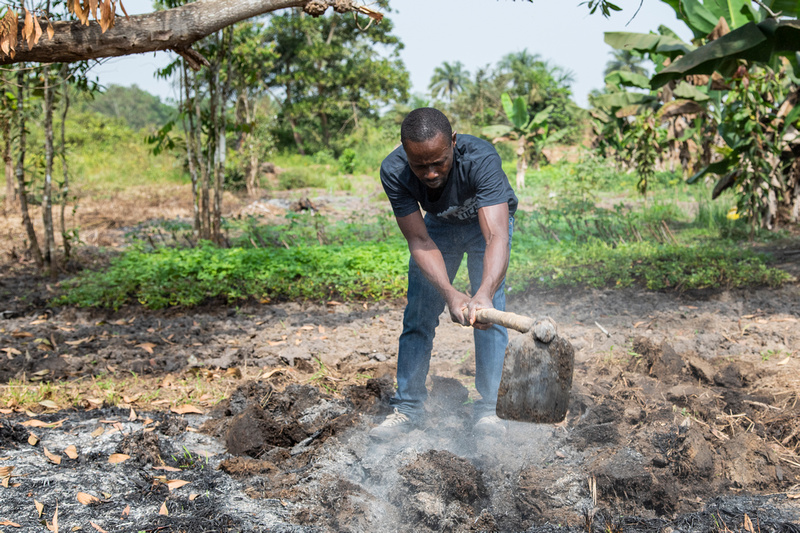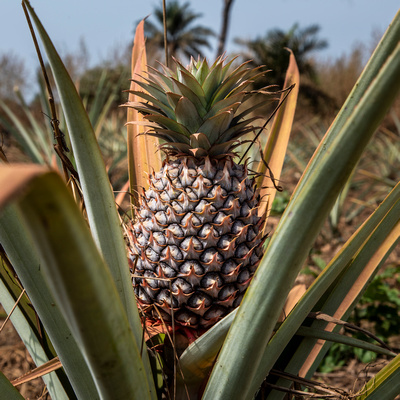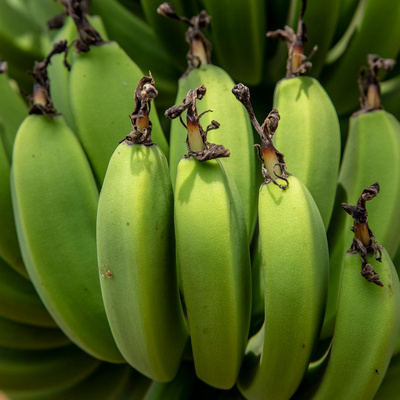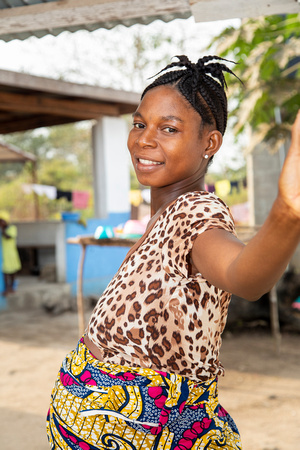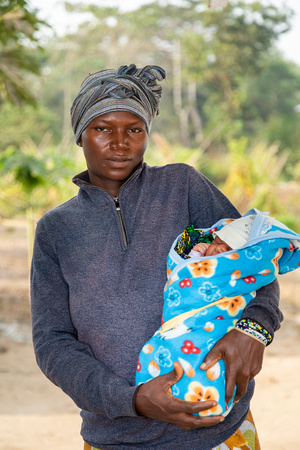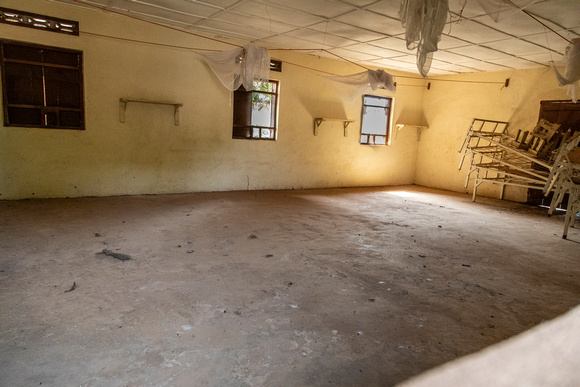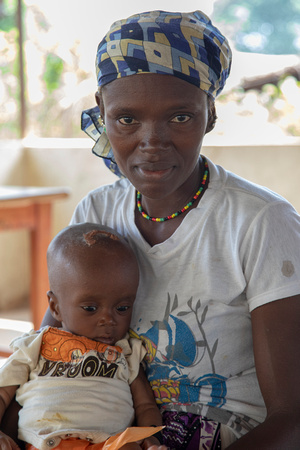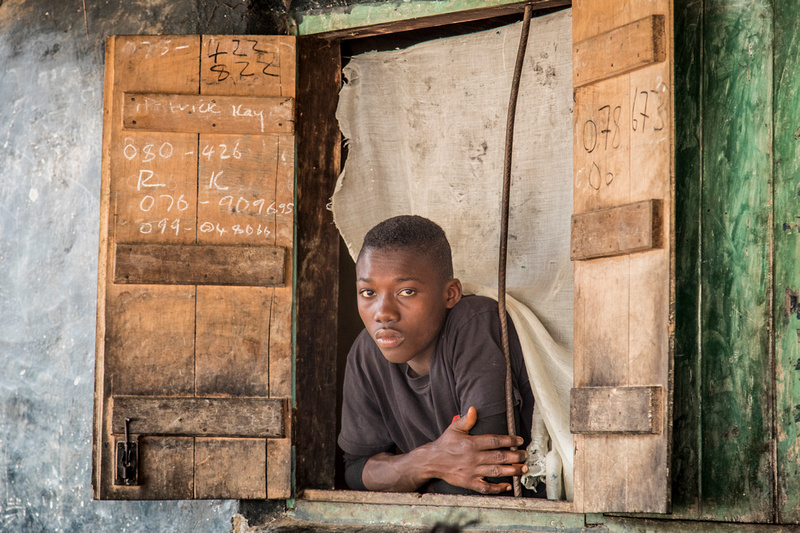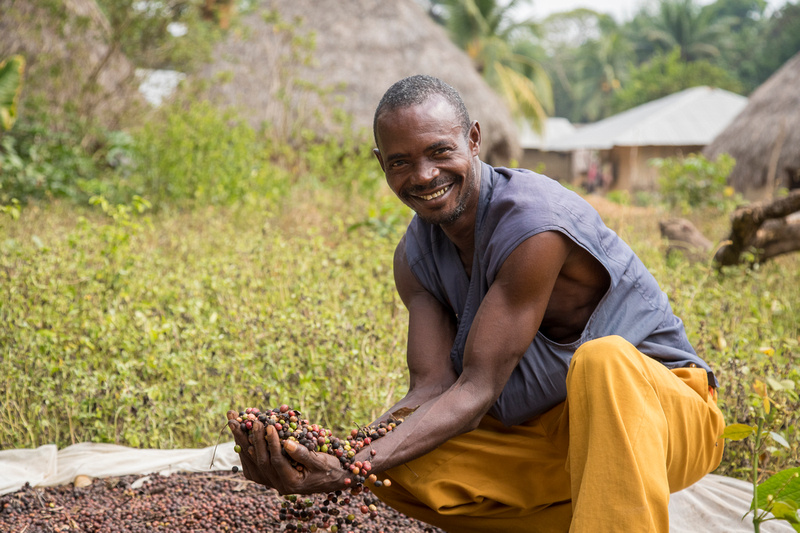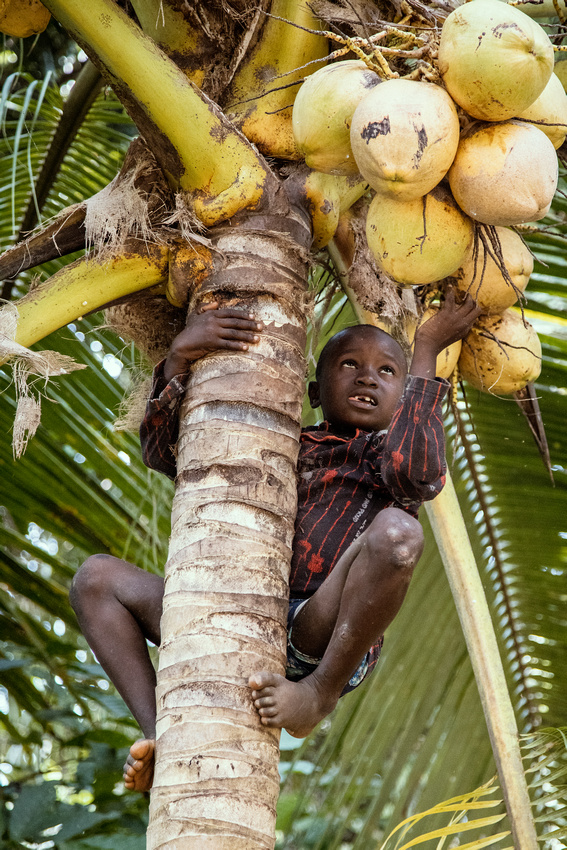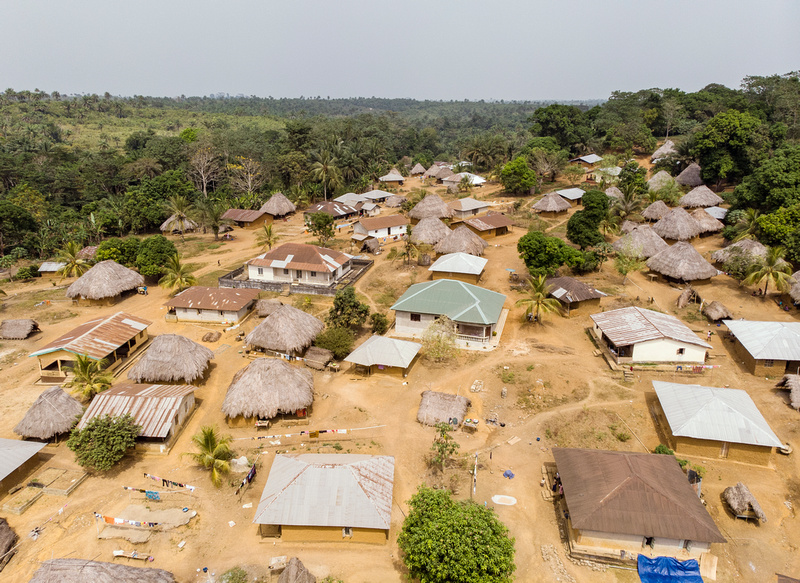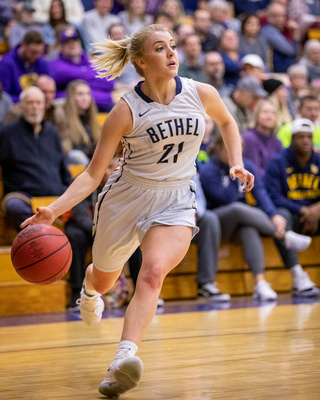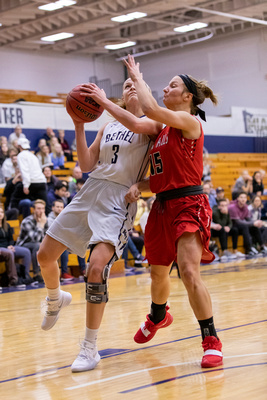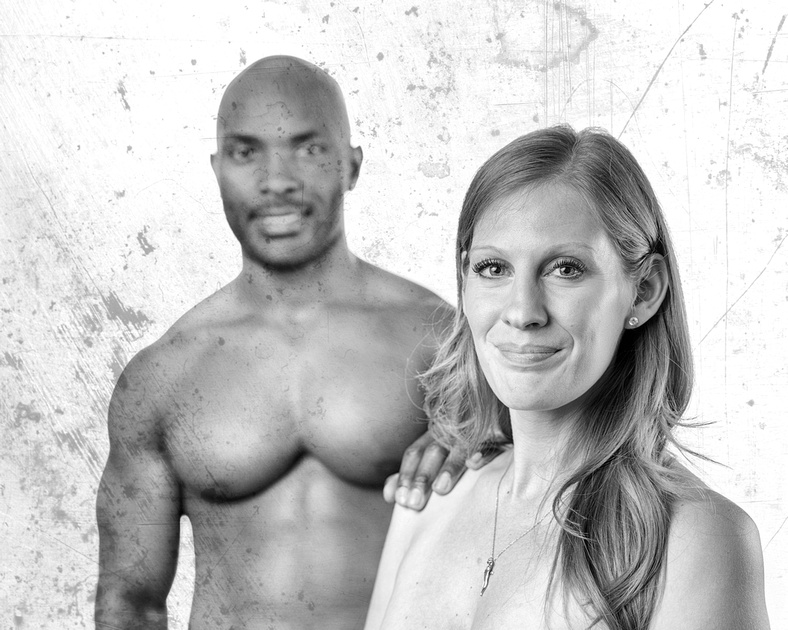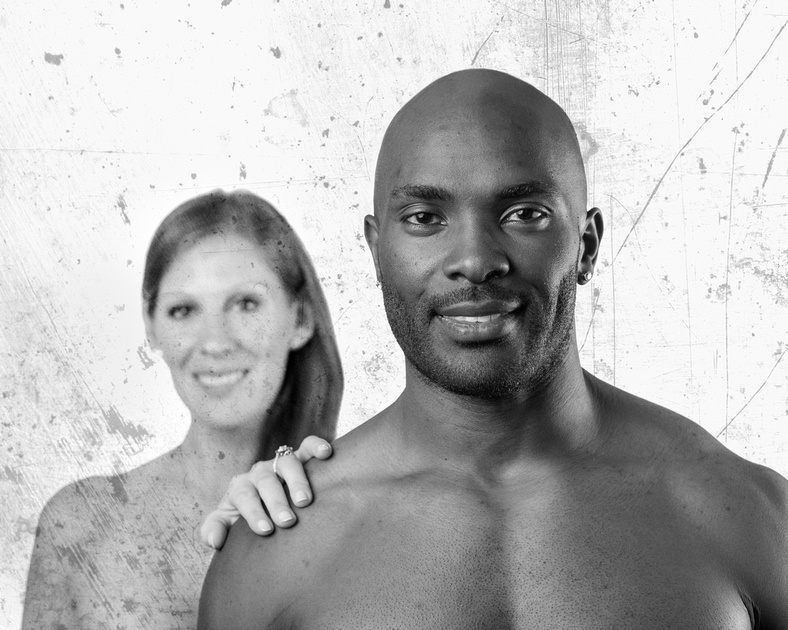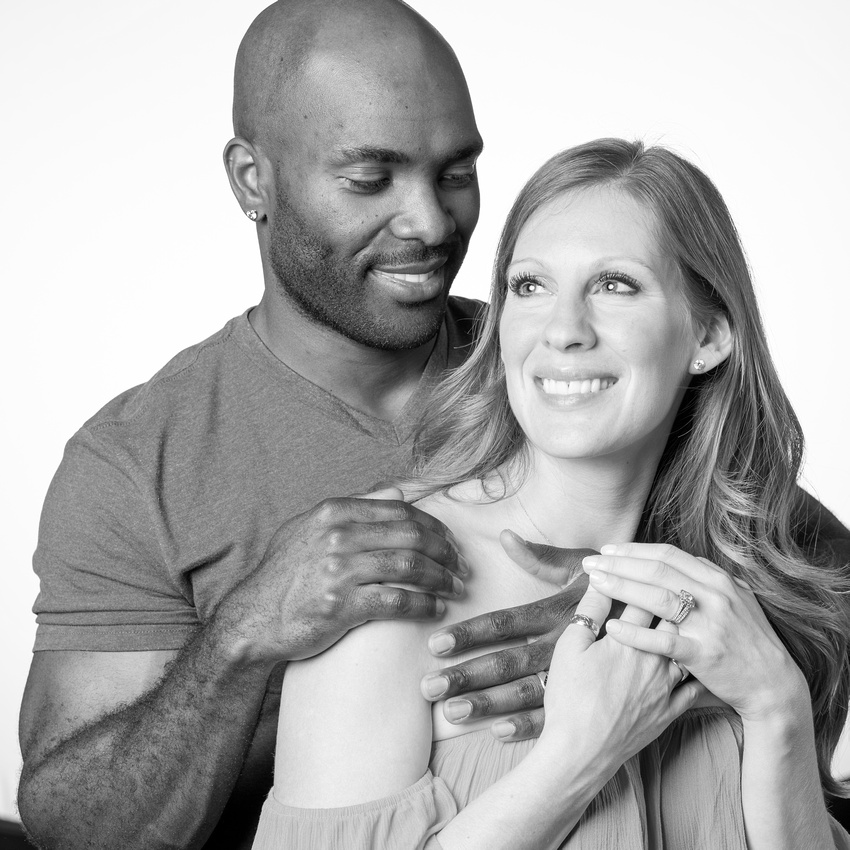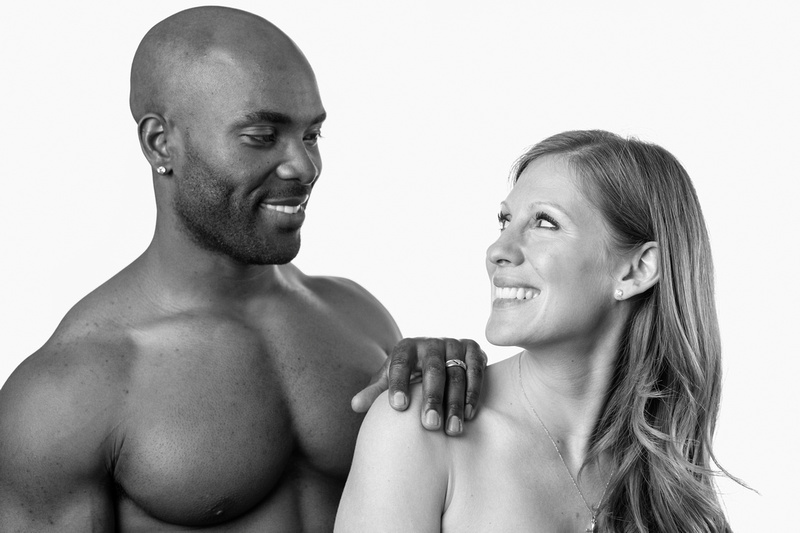RHCI farms on their landIn rural Sierra Leone subsistence farming is, for many, a necessary way of life. At the Mbao Mi Mother's home RHCI is fortunate enough to have land to farm that helps generate the food needed to provide three meals a day for the women who stay there.
Even though we visited during the dry season, a time of year when very little is growing, Patrick took advantage of shady spots to plant casava, beans, and peppers. He would water twice a day. Getting his water from a nearby swamp, he would dig a hole three or four feet deep, allow it to fill with water, and then use that to fill watering cans over and over and over again. It is hard manual labor but it is making a difference in the community. There are many other crops that are growing and will produce during the rainy season, oranges, pears, peanuts, papya, and mango. In 3-5 years coconut should be available and we are already seeing crops of banana and pineapple.
Food security is a major issue in developing nations. In Tikonko, the planting season begins in May and the harvest in September. During the months of July and August access to an adequate food supply is a challenge for many people and hunger becomes a reality they have to face. It doesn't have to be this way. We live in a world with an abundance of resources. The problem is in distribution. Things that make me mad!
Tiangay is from the Julien community in Tikonko where she lives with her husband and three other children. Her husband works in the Diamond minds, hoping to earn enough money to support the family. As Tiangay waits to give birth she is grateful for the opportunity she has to be at the birth waiting home.
So, you might ask why I would be mad. Actually, pissed off is a better term. I'm really upset today!
Later this afternoon we went to Gondama where I met Kaba, the area midwife. She is a woman who is passionate about her work. She showed me where they used to have a birth waiting home. It was built by M.S.F. (Doctors Without Borders), but after their three year contract was up they just left and there was no funding to keep it open. Kaba explained, what I already knew, that if there is nowhere for them to stay then women are more inclined to give birth in their villages, particularly during the rainy season, so if there are any complications there is no help for them and the mom's die. The sight of the empty building broke my heart. But that's not what's pushing me over the edge today. We returned to the clinic and spent some time talking about malnutrition. They see a large number of malnourished children and she went over some of the numbers for us. It was striking that they recorded no cases in April or May of this year. So we asked why? The answer was they had no food to offer the malnourished children so no one came and no cases were recorded! Apparently UNICEF used to provide them with Wheat Flower that they could send home with the families to help them get a start on providing proper food for their kids. However UNICEF determined that the kids in this region aren't "vulnerable enough" and have taken their resources elsewhere. Now I'm getting mad! There's enough resources in our world for everyone. Distribution is the main issue. Kids are dying because we can't get our act (I wanted to use a stronger word here but thought I'd keep it family friendly) together. Now I'm steaming.
Now the question is what do I do with my passion? Turn it into action, demand justice in the world and continue to work with RHCI and other groups that seek to bring hope through tangible action to folks like Tiangay, Sowoh and Sannay. First full day in TikonkoWhat a day! After a great night's sleep, my first since Friday, I hopped on the back of Mohammed Kabba's motorcycle and we headed out into the chiefdom of Tikonko. We visited a number of different villages, stopping in each one to spend some time with the people there. Kabba knows many of the folks in the villages as he is responsible for transporting medical supplies to the clinics that RHCI supports. It was plenty hot out for me, but having just escaped Minnesota's winter I'll happily take 97 degrees. When I saw this young man just hanging out the window I thought it would make a great photo. It's my favorite shot of the day.
We also visited the village of Kasama. I popped the drone up in the air., which is something new to me as I only acquired it at Christmas. At one point I thought I was going to lose it as I struggled to figure out which direction it was flying! But I managed to grab this fun aerial shot of the village. I'm sure there will be more to come.
How to get better basketball photos
So how do we get there? The first thing I do is set my camera in manual mode. The lighting in a gym is constant so once you have the exposure set there’s no need to change it. Next I need to dial in the right exposure setting which means balancing shutter speed, aperture, and ISO. ISO will be my main variable in this equation. After setting the shutter speed I dial in the aperture, I like to use my 70-200 f2.8 lens and set it at f3.2, as that provides a little more I have my camera set on continuous auto focus, AI Servo on my Canon camera, and the shutter release is set on high speed continuous shooting. Now it’s just a question of sitting down and learning how to follow the play and frame the shot!
TogetherUnfortunately we live in a world in which racism continues to be an issue. People are always searching for ways to elevate their sense of self worth and value in the world and often do so at the expense of others, skin color has become a simple way for one group of people to declare their superiority to others. But this flies in the face of Judeo-Christian teaching which makes it clear that all of humanity is created in the image of God. I've spent a lot time reflecting on the rising level of racial tension in America and wanted to find a way to convey people of different skin color coming together. All my initial ideas felt too much like the cover page of most college catalogues! My desire was portray unity, love, intimacy, and a sense of "togetherness." Last October I officiated at the wedding of Amy and Juvitus and I thought they'd make the perfect couple for this project. When I approached them about participating they thought it was a wonderful idea and following the shoot we grabbed a couple of drinks and chatted about some of the racial issues we face in our society.
The next couple of images portray a sense of reaching out to engage with the other person, recognizing that at times skin color creates false barriers between people. However, when we have the courage to reach out to people who may appear different to us, we will discover the truth that we are all part of the human race, we all share very similar concerns about life, we are all created in the image of God and have an inherent sense of dignity and worth that comes with that reality.
Ultimately love is at the center of this relationship, two people who decided to give their lives to one another and the truth is we are all stronger together. Together we must learn to stand up to the injustice of racism in our world.
|

